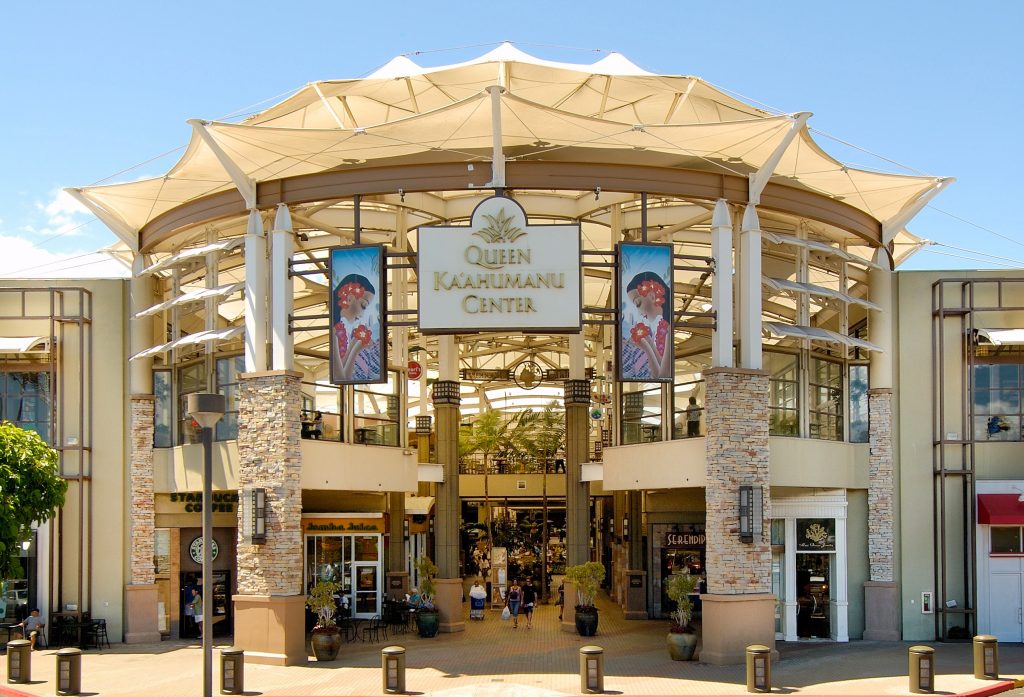Queen Kaʻahumanu Center pitched as future site for apartments; council shuts it down

Maui County council and administration are at odds over whether vacant spaces in industrial areas, such as Queen Ka’ahumanu Center, should be able to convert into apartments as a way to combat the housing crisis.
Bill 82 would have allowed apartments in certain heavy industrial areas on Maui. Introduced by the administration, the plan was called a “priority.”
However, the council in a 5-4 vote shot down and filed the measure during the Planning and Sustainable Land Use Committee on Thursday.
Council members opposing the bill said it hasn’t been thoroughly vetted by the community, other pathways for allowing residential uses in industrial areas should be taken and apartments in heavy industrial areas pose challenges of possible noise and noxious materials.
Other council members, though, said the bill had potential, and they wanted to work with the administration to iron out details.
“We have to find a way to rehab vacant buildings,” said Council Member Gabe Johnson, chairman of the Affordable Housing Committee, who voted to keep it alive.
Queen Ka’ahumanu Center representatives testified Thursday that the center would be great for live-work spaces.
“We want the retail stores to be able to benefit from increased density, increased foot traffic, and not just that, we want to be part of the solution to Maui’s limited housing stock,” said Lemore Czeisler of Pacific Retail Capital Partners, which manages the mall.
Czeisler said shopping malls are undergoing a “historic transformation” as retailers are struggling to compete with e-commerce and Amazon. The pandemic only made things worse.
“Spaces are laying vacant all over the country,” she said. “We really donʻt want to see this happen to (Queen Kaʻahumanu Center).”
The mall in 2020 was hit with a foreclosure lawsuit for failing to pay a more than $80 million loan.
Planning Director Michele McLean during the meeting advocated for Bill 82, calling it a creative way to help alleviate the housing crisis. She said other areas in the US are doing the same.
“We are often asked what is Planning Department doing to promote affordable housing,” McLean said. “Today we are working with the framework that we have, proposing to create more housing opportunities by allowing housing in areas where it makes sense and is needed.”
“We are professional planners and we would not be proposing this if it wasn’t needed, appropriate, compatible and good planning practice,” she added.
Plus, Maui’s heavy industrial uses, such as sugar mills, pineapple canneries and other major factories, are no longer operating or have moved from Central Maui.
Jacky Takakura, county administrative planning officer, said Wailuku Sugar Mill, once a site for heavy industrial uses, now holds businesses like Tamura’s, Wei Wei and the Wailuku Post Office.
Places evolve as Maui changes over the years, and with the measure Maui can have more housing in areas where infrastructure exists, Takakura added.
Council members who voted to file the measure included Tamara Paltin, Kelly King, Keani Rawlins-Fernandez, Shane Sinenci and Mike Molina. Those who wanted to keep it alive were Johnson, Alice Lee, Tasha Kama and Yuki Lei Sugimura.
Molina said the community hasn’t yet been consulted and more nighttime meetings should be held.
“We were not informed the administration was pursing this legislation,” he said. “We need more communication.”
Rawlins-Fernandez said the bill isn’t the only way for residential uses to be allowed in industrial areas.
Paltin raised concerns about residential areas being impacted by noise and noxious issues. She added that Queen Kaʻahumanu Center didn’t have enough details and wasn’t transparent about possible residential plans.
“We can work together on this but it needs to be done the right way,” she said.
However, Sinenci, who voted with reservations, said some youngsters have told him they want to live in walkable, more industrial areas.
Kama said that when housing plans get shut down, she wonders where they will actually get approved.
“If not here, where, if not here, where, if not here, where,” she said. “Today, Miss Takakura has laid it out for us, this is where you can. I’m very happy with that, and I’m very supportive of this bill.”
Sugimura wanted to keep the proposal alive, saying that members should work with the Planning Department and other administration staff.
“I appreciate them looking at a situation and trying to find solutions,” she said. “I wish we would leave the door open so we can bring it back and amend it together so we can be part of the solutions.”
The purpose of the bill was to allow M-2 property owners to redevelop vacant or underutilized land into housing.
However, apartments would only be allowed when all of the following are met: Located on the same lot as business or industrial uses; an existing business or industrial use is located within 500 feet of existing residential use; appropriate physical or spatial buffers are provided between residential and noxious uses, such as dense landscaping or walls that match existing or proposed architecture; if prior industrial activity involved the use or handling of materials that remain onsite, including in the soil, and could pose a health risk to future residents, environmental tests and remediation would first be conducted; no transient vacation rental use; Moloka’i is excluded.
The Planning Department said that the areas would qualify include the Queen Ka’ahumanu Center, Kahului Industrial (south/mauka end of Hukilike), Wailuku Millyard, Pu’unene Mill area if nearby residential use continues, and a portion of West Maui.









